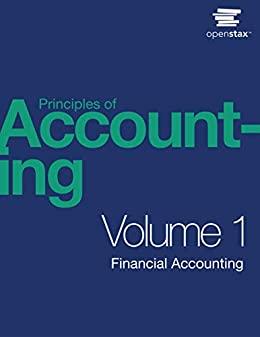Question
Module IV: MUS Sampling Factory Equipment Additions Richard Derick has asked you to develop a sampling plan to determine the extent of misstatements in classifying
Module IV: MUS Sampling Factory Equipment Additions
Richard Derick has asked you to develop a sampling plan to determine the extent of misstatements in classifying expenditures as repairs and maintenance expense or factory equipment additions. Given the problems noted during control testing (as described in Module II), Derick believes that significant misstatements may have occurred.
The same vendors invoice frequently contains charges for parts and supplies as well as equipment, and the Bronys Bikes employees preparing the vouchers sometimes fail to distinguish among the charges and simply indicate factory equipment as the debit if the invoice amount is large. Inasmuch as this type of misstatement would cause an overstatement in the factory equipment account, Derick instructs you to use MUS sampling for the lower stratum to determine the extent to which such misstatements may have occurred during 20X9. In the Johnstone textbook, MUS is used interchangeably with the term PPS, which MUS is a subset. Of the total debits, $89,860,000 to factory equipment during 20X9, major additions in the amount of $77,260,000 have been made to replace worn-out equipment. The lower stratum contains 1,246 items for a total dollar amount of $12,600,000. Derick has decided to audit the upper stratum of the population containing the major additions in its entirety. You are asked to test the lower stratum on a sampling basis.
Requirements
1. What is the objective of performing the test of factory equipment expenditures? What is the population? What is the sampling unit?
2. Using Excel download the file labeled 20X9_mus. (Link) Locate the following documentation in the file:
WP 11.3AMonetary unit sampling plan;
WP 11.3BMonetary unit sampling planprojected misstatement; and
WP 11.3CMonetary unit sampling plancomputed precision and upper misstatement limit.
Scroll to WP 11.3A, Monetary Unit Sampling Plan. Determine sample size from textbook Exhibit 8.5 Table 1 assuming Derick has set the parameters stated below. Calculate the sampling interval.
Risk of incorrect acceptance: 5% or 95% confidence
Expected population deviation rate: 1% based on auditors prior experience with the entity
Tolerable rate of deviation: 6% determined by auditor; if actual exceeds 6%, the control probably has failed
3. What factors did Derick consider in setting these parameters?
4. Scroll to WP 11.3B, Monetary Unit Sampling PlanProjected Misstatement. This document summarizes all invoices containing posting errors and calculates the projected misstatement. Column 3 is already computed for you to determine the amount of the misstatement for that item. The equations for columns 4, 5 and 6 have been incorporated into the worksheet for you. Refer to textbook Exhibit 8.11 (Link) to see how the formulas were determined. What factor determines whether a tainting percentage appears in column 4?
5. Scroll to WP 11.3C, Monetary Unit Sampling PlanComputed Precision and Upper Misstatement Limit. Complete the Incremental Allowance for Sampling Risk schedule by ranking the projected misstatements as appropriate. Textbook Exhibits 8.11(Link) and 8.12 (Link) (illustrate how this calculation is performed manually. There are four misstatements identified. Use the values in textbook Exhibit 8.9 (Link) 5% risk of incorrect acceptance column and the rows 0-4.
6. Explain the meaning of the following amounts:
Basic precision;
Incremental allowance for sampling error;
Upper misstatement limit.
7. Evaluate the sampling results. Do they support Dericks concerns regarding possible material misstatement? Note the audit adjustment based on misstatements discovered while examining the sample. Is this adjustment adequate to bring the population into acceptable bounds? If not, what alternate actions might you choose to pursue, based on the sampling results?





Step by Step Solution
There are 3 Steps involved in it
Step: 1

Get Instant Access to Expert-Tailored Solutions
See step-by-step solutions with expert insights and AI powered tools for academic success
Step: 2

Step: 3

Ace Your Homework with AI
Get the answers you need in no time with our AI-driven, step-by-step assistance
Get Started


